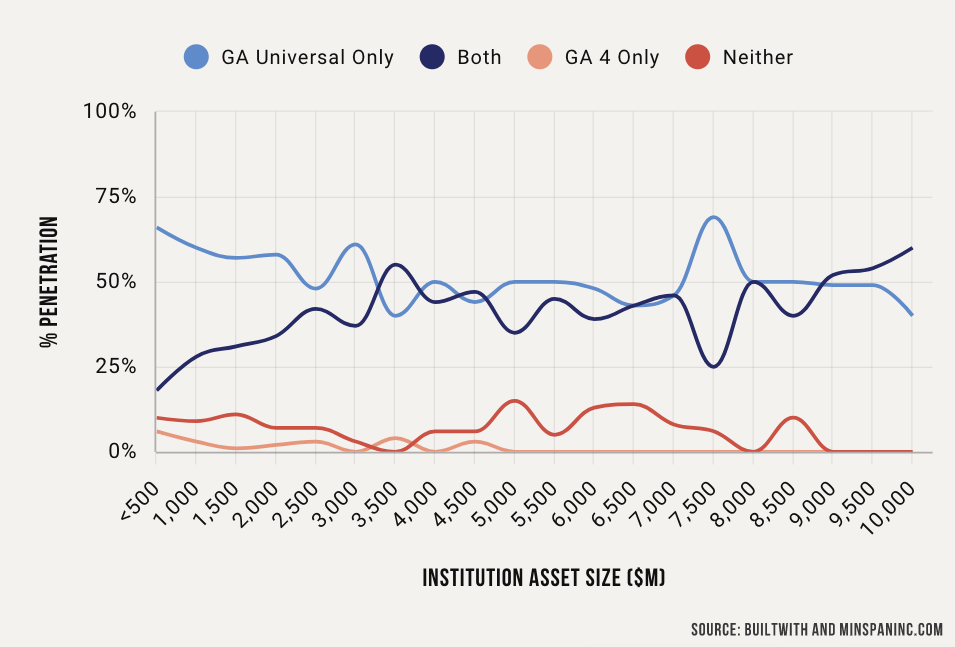92% of community financial institutions under $10B of assets rely on Google Analytics as their primary window into their customer’s digital experience. But over 57% are months away from losing that insight and any meaningful continuity in identifying trends.
Google Analytics Universal will stop collecting data on July 1, 2023.
In March of 2022, Google announced that Universal Analytics would stop processing data in July of next year. Of course, they have the previously released Google Analytics 4 (GA4) to replace it. However, several key factors make this a critical event for marketers.
There is no direct migration from Universal Analytics to Google Analytic 4.
Adopting GA4 is not a version upgrade. It is a clean sheet adoption of an entirely new product that functions differently. Deployment and reporting are moved into other Google products (Google Tag Manager and Google Data Studio). While your current Universal Analytics configuration can inform the process, deploying GA4 is a starting from scratch exercise.
There is no ability to import data from Universal Analytics to GA4.
Your historical data will remain available in Universal Analytics for at least six months from that sunset date (Google Analytics 360 customers have a slightly different timeline). However, in all cases, you will not be able to import that data into GA4. Any meaningful historical comparisons in GA4 will only be available from when you deploy GA4. If having year over year view is key to you or your stakeholders, you are already inside the window of losing that capability if you haven’t already deployed GA4.
GA4 is fundamentally a different product and is for a narrower audience than Universal Analytics.
Even if it’s a foregone conclusion that you will replace Universal Analytics with GA4, it’s essential to understand the differences between the products. GA4 is not meant to be a one-stop shop for all users. Reporting, for example, is no longer built into the product. No more emailing of reports daily or weekly. This is meant to be done from Google Data Studio and requires some work to configure to replicate/enhance what you rely on today. Conversion tracking is configured and measured differently and requires a fresh look at your customers’ journey and the insights you need from your web and application properties.
That was a lot, and we didn’t even touch on why these changes make sense (and there are sound reasons for it). If you’re unsure what to do next or want to check if you’re on the right path, reach out. We’re happy to talk through your situation and point you in the right direction to ensure you don’t lose a critical capability to engage with your customers.

